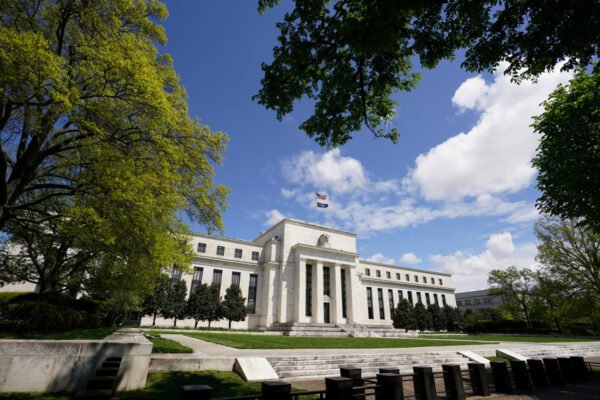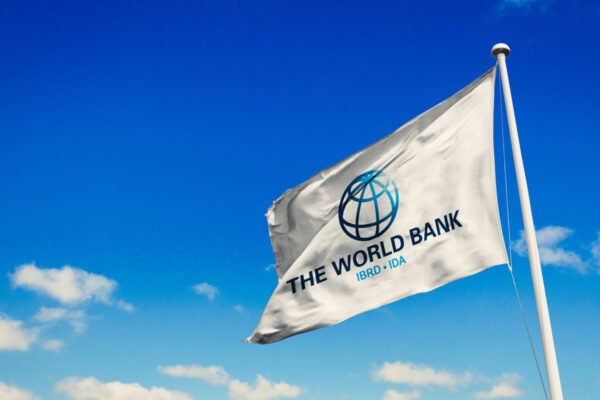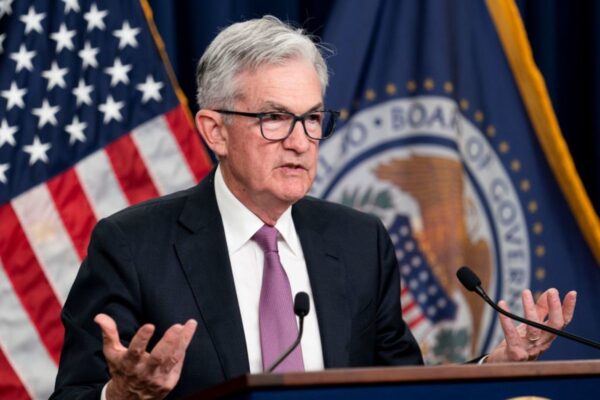US Interest Rates Hikes Are Emerging Into Weapons Of Mass Destruction For The World Economy: The Threat Of Global Recession In 2023

US Interest Rates Hikes Are Emerging Into Weapons Of Mass Destruction For The World Economy: The Threat Of Global Recession In 2023
The US consumer price inflation report for August has crushed Americans’ hopes that inflation would peak in the summer. But for practically everyone who doesn’t live in the country with the largest economy in the world, it’s going to be a double bummer. This is because the US Federal Reserve, led by Jerome Powell, will now feel empowered to raise interest rates even further to curb inflation.
Unfortunately, sometimes the problem is greater than the remedy. Parts of the global economy will collapse if the Fed does raise rates aggressively. The impacts will be felt beyond its national jurisdiction. The global recession will in turn have an impact on US economic growth. The world of unexpected repercussions will then suddenly become our focus.
The trajectory of the two-year US Treasury yields, which are followed by international bond markets, is alarming for countries and currencies that are unable to keep up with the rates.
The yields were 0.2% at this time last year; they are now 19 times greater. And this is all before the Fed begins its aggressive $95 billion monthly quantitative tightening program. It truly hasn’t had time to evaluate the results of its brisk hiking. The dollar is the world’s reserve currency, like it or not. If cash dries up due to increased rates, everyone outside of the US will be affected.
US investors won’t reconsider their decision to continue investing in US assets, depriving the rest of the world of capital.

The most recent Bank of America global survey of fund managers, released on Tuesday, reveals the largest underweight of global stocks in its history. You won’t run the risk of losing your job as an investment analyst if you solely use dollar-denominated assets or currencies. It’s hard to predict what will change this way of thinking.
When the dollar is getting stronger, other economies and markets have a very difficult time competing. As the Fed’s rapid interest rate increases force ever-faster flights to quality, that omnipotence is destroying many of the world’s currencies.
Imagine Japan. The yen has fallen more than 25% versus the dollar in the last year, to its lowest level since 1990. Due to the need to import the majority of its energy and pay for it in dollars, the nation’s export-led economic advantage over the US has crumbled.
The Bank of Japan has been compelled to strengthen its currency defence. Active intervention is now a real option, and it would likely be financed by selling its holdings of US Treasury notes.
The BOJ was the only major central bank for a considerable amount of time content to embrace inflation as a road to growth for its sluggish economy. Finally, prints above its 2% threshold are being seen. It also kept a tight hold on its bond market to keep interest rates low, and even negative.
It cannot, however, do either of these things and stop the downward trend of its currency. It can only allow the yen to fall so much or so quickly. And the Chinese yuan, Korean won, and Taiwan dollar will all suffer as a result. The BOJ’s approach might be destroyed, upsetting the rest of Asia, if the dollar experiences yet another period of strength fueled by a new rate hike from the Fed.
In the event of an unwelcome currency decline, China will feel justified in retaliating in kind. It usually strictly regulates it, but during the past six months, it has had to let the yuan lose more than 10% of its value against the dollar. Even the second-largest currency in the world is powerless against the American inflationary wave.
Since the spring of last year, the euro and the pound have been battling out for the lowest dollar value on the opposite side of Eurasia. Europe is already deprived by the amount of money spent to combat the pandemic, and because it relies on Russian natural gas, it is also now in the crosshairs of the energy crisis.
Growth is rapidly vanishing in front of our eyes as the UK has been stagnating all year and several countries in the European Union are entering a recession. According to economists at Deutsche Bank AG, the German economy could fall by as much as 4% in 2019.
Likewise to the Fed Reserve, the European Central Bank as well as the Bank of England predict parallel declines in the liquidity of the banking system, suspensions of asset acquisitions for money creation, and significant rate rises.
All that enter here, abandon hope.
We practically let the Fed set interest rates for the entire world, therefore this is what will happen. However, Fed Chair Powell and his countrymen are determined by myopia since all they can see is the oversaturated American labour market. The ensuing financial arms race runs the potential of being disastrous.
The fact is that not every economy needs to have ever-rising borrowing costs to stifle demand; a large part of global inflation is external and driven by supply-side factors.
And since COVID-19 struck in 2020 and severely slowed down globalization, the world has undergone a profound transformation. The response of the Fed and other central banks is unchanged, though.

Greater flexibility is needed to halt and restart the global economy than what the harsh mechanism of interest rates can provide. Weaning financial markets and asset prices away from continuous cycles of quantitative easing is a positive thing. The Fed has, yet, twice mishandled the unwinding procedure.
Why do central banks keep trying to hammer a 2 per cent inflation target pin into the head of massive economies when it is no longer desirable or viable to do so? Surely it’s time to move away from precise numbers and towards a flexible range. Although base effects would certainly cause headline inflation to fall significantly next year anyhow, bringing core inflation, which excludes food and energy, back to much lower levels will be extremely costly from an economic standpoint.
The US Fed’s efforts will eventually backfire on both the US and the Fed. By then, all of the pandemic’s trillions of dollars worth of stimulus work will have been undone—what a staggering waste of time, resources, and energy.
Interest rate hikes are putting the world economy in threat of entering a recession in 2023.
The US Federal Reserve Board will convene once more on September 20–21. There is a solid argument for the Federal to halt its unrelenting tightening of monetary policy, even if the majority of economists predict the next big hike in interest rates.
A spate of financial crises in emerging markets and developing countries, in addition to the recession, is also anticipated to do them “permanent harm,” the report stated. Compared to the period leading up to prior global recessions, the loss in worldwide consumer confidence has already been much more severe.
According to a World Bank analysis, major central banks around the world have been rising interest rates this year with an extent of coherence that has not been seen in the last 50 years, and this trend is likely to continue far into next year.

Continual increases in policy rates by central banks worldwide
These rises in interest rates and other policy efforts might not be sufficient to reduce global inflation to pre-pandemic levels. Investors predict that central banks will encourage the average rate for global monetary policy by more than 2 percentage points during 2023, to around 4%.
These rate increases might result in a worldwide core inflation rate (excluding energy) of around 5% next year, about double the five-year average before the epidemic unless supply disruptions and labour-market pressures abate.
Global GDP growth will drop to 0.5%, affecting EMs and developing nations.
For the global inflation rate to be brought down to a level that is consistent with central banks’ objectives, interest rates may need to be raised by an additional two percentage points. According to the World Bank, if this rate hike is coupled with financial market stress, global GDP growth will only be 0.5% next year, a per-capita drop of 0.4% that would technically qualify as a worldwide recession.
“Global economy is severely dropping, and it is likely to continue to slow as more nations experience recessions. David Malpass, President of the World Bank Group, represented his grave fear that these trends would continue and have terrible long-term effects on people in emerging markets and developing countries.
He also emphasized that governments may achieve low inflation rates, currency stability, and quicker development by focusing on increasing production rather than limiting consumption. Malpass argued that for growth and the eradication of poverty, policies should work to increase capital investment and boost capital allocation, productivity, and efficiency.
Control of inflation without sacrificing growth
The report claims that central banks can manage inflation without running the risk of a downturn. However, it will necessitate concerted action from numerous policymakers.
While monetary tightening may have cross-border spillover effects in advanced economies, the study found that in emerging markets and developing economies, the emphasis should be on strengthening macroprudential rules and accumulating foreign exchange reserves.
Fiscal authorities will need to carefully time the removal of support measures in the meantime. Economic authorities can combat inflation by increasing worldwide supply through easing labour market restrictions, increasing the availability of goods globally, and strengthening global trade networks.

The US Federal Reserve Board will convene once more on September 20–21. There is a strong argument for the Fed to pause its unrelenting tightening of monetary policy, even if the majority of economists predict another big hike in interest rates.
Although its rate increases to date have slowed the economy, most plainly the housing industry, it is far less clear how they will affect inflation.
Particularly during turbulent times, monetary policy often has a slow and inconsistent impact on economic performance. The Fed would be wise to hold off on rate increases until a more accurate assessment of the situation can be made given the depth of geopolitical, financial, and economic uncertainty, not least concerning the direction of inflation going forward.




